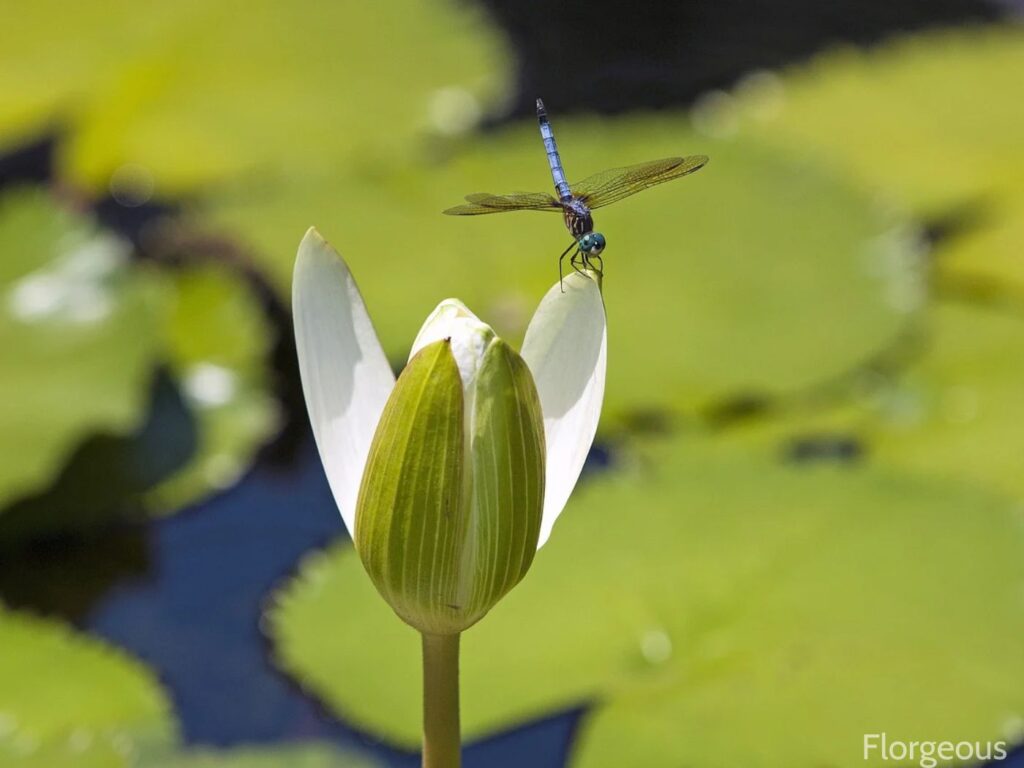Imagine stepping into your garden and being greeted by the mesmerizing sight of dragonflies, those agile and colorful creatures, darting playfully amongst your plants. Sounds enchanting, doesn’t it? If you’re keen on transforming your garden into a dragonfly haven, you’re in the right place.
In this article, we’ll explore the fascinating world of plants that attract dragonflies. You’ll learn how to create an inviting environment for these beneficial insects, which not only add beauty to your garden but also play a vital role in controlling pests.
So, let’s embark on this exciting journey together, and bring a touch of magic to your garden.
Water-Loving Plants for Dragonfly Habitats
Having the right plants in your garden can turn it into an attractive spot for dragonflies. In particular, water-loving plants are ideal as they provide the perfect surroundings these fascinating insects require.
Water Lilies

Water lilies, with their unmistakable floating leaves and striking blooms, are top choices. Dragonflies are drawn to these plants as the broad leaves offer a great place to bask in the sun. Besides, they also serve as excellent egg-laying spots. So if you’re eager to house these vibrant fluttering creatures, adding water lilies to your aquatic garden is a good start.
Cattails

Cattails, another vital water-loving plant, are perfect for your dragonfly-friendly garden. Their tall and sturdy stems offer an ideal perching spot for these insects.
Furthermore, the dense growth of cattails provides a safe and suitable environment for dragonfly larvae to grow and develop. By incorporating these plants, your garden can indeed become a favorite habitat for dragonflies.
Flowering Plants to Entice Dragonflies
In addition to water-loving plants, letting certain flowering plants bloom in your garden can also attract dragonflies. They provide a sweet aroma and vibrant colors that entice these buzzing insects and offer an inviting environment for them to nest.
Black-Eyed Susan
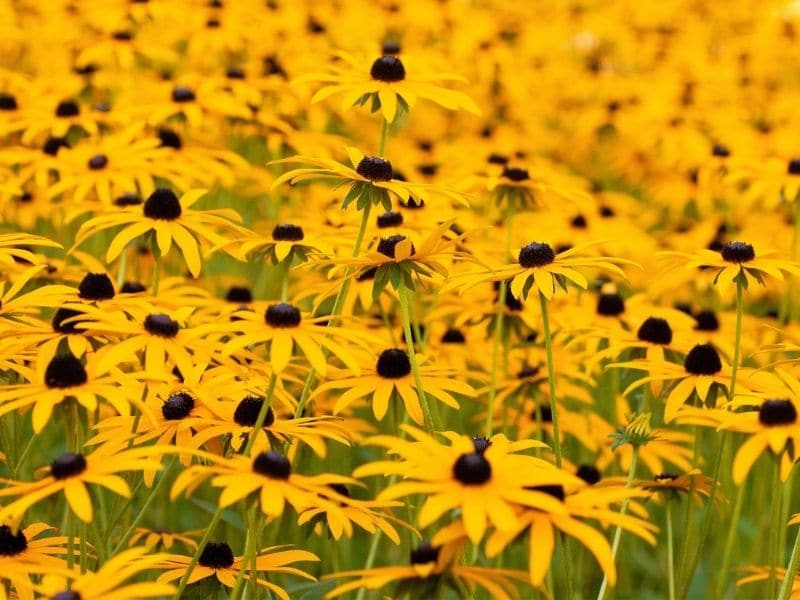
Black-Eyed Susans can be at the top of your list of dragonfly-friendly plants. They’re known for their bright, golden petals and dark centers, adding a pop of color to your garden.
Dragonflies, drawn to their vivid hues, often use their tall stems as perching spots, giving you frequent glimpses of these fascinating insects.
Coneflower
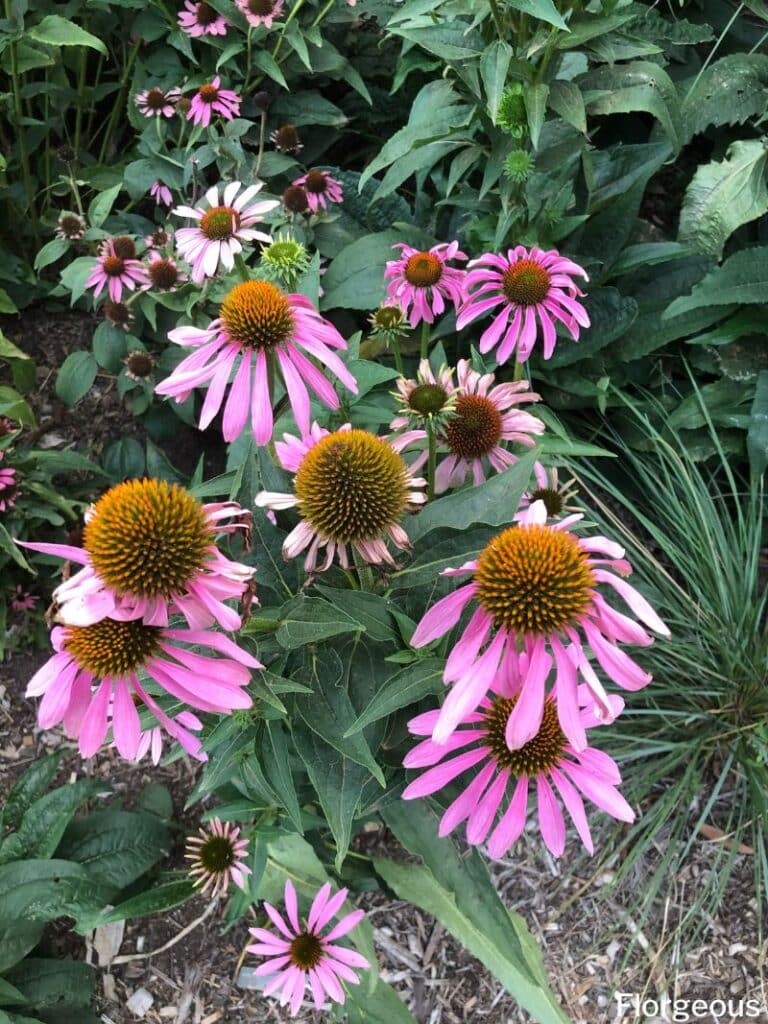
Coneflowers, with their large, daisy-like flowers in shades of pink, purple, and white, are not just a feast for your eyes but also for dragonflies. Their high nectar content and sturdy stems create an ideal combination for attracting dragonflies.
Plant them around your garden pond or water feature to create a little dragonfly paradise.
Lavender
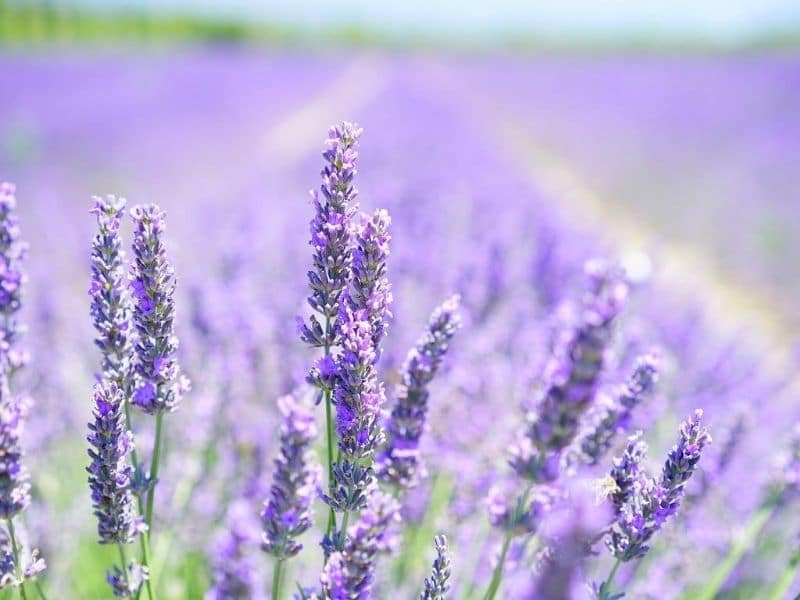
Lavender, known for its soothing fragrance and purple blooms, is another dragonfly favorite. Dragonflies love to perch on the tall, sturdy stems of lavender plants. The purple flowers stand out against the landscape, making them a favorite landing spot for dragonflies.
Not to mention, their calming aroma helps create a relaxing atmosphere for you while your garden buzzes with the activity of these beneficial insects.
Shrubs and Trees That Help Attract Dragonflies
It’s not just flowering plants that draw in dragonflies, certain types of shrubs and trees can also contribute to making your garden an appealing environment for these beneficial insects. Let’s take a closer look at a few of these flora.
Buttonbush
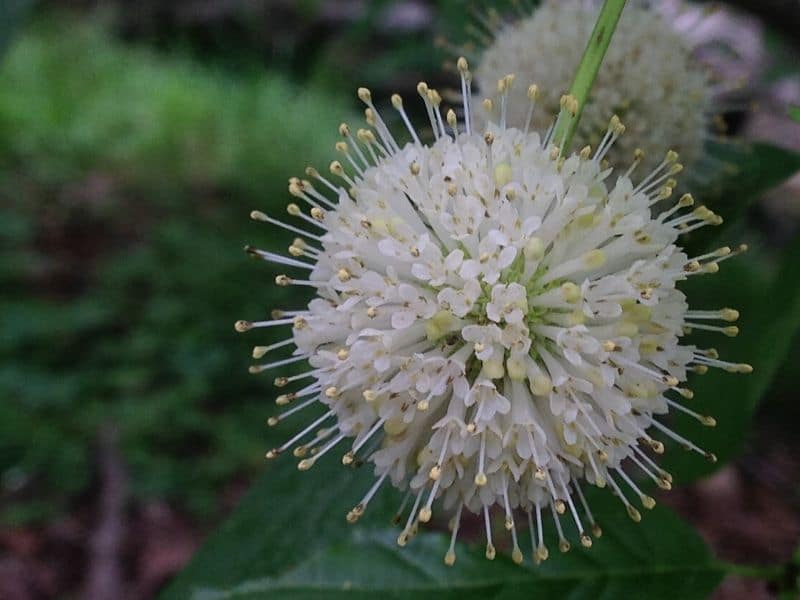
The Buttonbush, with its unique, orb-shaped flowers, proves to be a crowd-pleaser in the dragonfly domain. The fragrant, white flowers launch a fragrant invitation, while its dense foliage offers splendid hiding and resting spots.
Additionally, Buttonbush thrives in wet environments, and given that dragonflies are water-lovers, it’s a prime choice for your garden.
Willow Trees

Willow trees, particularly their weeping varieties, act like irresistible beacons for dragonflies. Their drooping branches drape over water bodies, creating shaded zones that dragonflies love for their larvae.
These trees don’t just provide habitat but also supply necessary food – small insects caught in the tree’s sticky foliage are a regular feast. By adding a willow tree near your garden pond, you don’t just boost the landscape’s aesthetics but also lay out the welcome mat for dragonflies.
Creating Ideal Conditions for Dragonflies
Making your garden an oasis for dragonflies goes beyond just water-loving plants and flowering shrubs. You’ve got to hit the sweet spot with sun exposure and maintain a healthy pond or water feature.
Importance of Sun Exposure
Dragonflies are creatures of light. For them, your yard’s sunny spots are like a cozy retreat, especially near a body of water. You see, these winged jewels rely heavily on sunlight for not just warming their flight muscles but also for their lifecycle. A sunny pond or marsh encourages algae growth, the main food for dragonfly nymphs.
Hence, providing an optimal sunlight zone in your garden is crucially linked with attracting these beneficial insects. You can achieve this by positioning your water feature where it can receive around five to six hours of sunlight daily.
Keeping the Water Features Healthy
A healthy water environment significantly affects the dragonflies’ interest in your garden. Murky and unkept ponds turn off these insects, impacting their lifecycle.
So, as a savvy gardener, make an effort to keep your water features clean. This involves removing excessive algae or any decaying plant material regularly, ensuring the water isn’t stagnant, and maintaining good oxygen levels.
Water features that include a pump or a waterfall are a great way to keep the water oxygenated and freshwater circulating. This won’t just charm adult dragonflies but also provides an ideal breeding ground for their larvae.
Remember, patience is key: It may well take a season or two for these glistening creatures to find your garden. But once they do, it’s pure spectacle! Stick with these guidelines, and soon enough, you’ll find Mr. and Mrs. Dragonfly dancing around in your garden.
Tips for Maintaining Your Dragonfly-Friendly Garden
Congrats! Your garden now encompasses all the necessary elements of a dragonfly haven. From lush, water-loving plants, to a sun-kissed pond, you’ve set the stage for these winged wonders to make an appearance. But how do you ensure they stick around? Here’s how.
Avoiding Pesticides
Fostering a dragonfly-friendly environment requires an eco-conscious approach. Thus, one of the first steps in preserving this insect haven is to avoid using pesticides. Pesticides can harm dragonflies, and sadly, their nymphs too.
It’s widely known that these chemicals are harmful to many beneficial insects, dragonflies included. Instead, stick to organic gardening practices. This way, you’re not only maintaining a healthy environment for dragonflies but improving your overall garden ecology as well.
Regular Pruning and Care
Once you’ve checked the ‘no to pesticides’ box, it’s time for another vital garden chore—pruning. And no, it’s not just about sprucing things up for a picture-perfect view. Regular maintenance of your plants, especially the ones around your water feature, is essential for an optimal dragonfly dwelling.
Overgrown plants can shadow a pond, hampering sunlight penetration and algae growth — remember, these tiny green organisms serve as food for nymphs.
Conversely, undergrowth can harm the ecosystem, leaving fewer hiding spots for dragonflies. It’s a balancing act, making your gardening shears your most trusted tool for maintaining this delicate equilibrium.
Up next:

